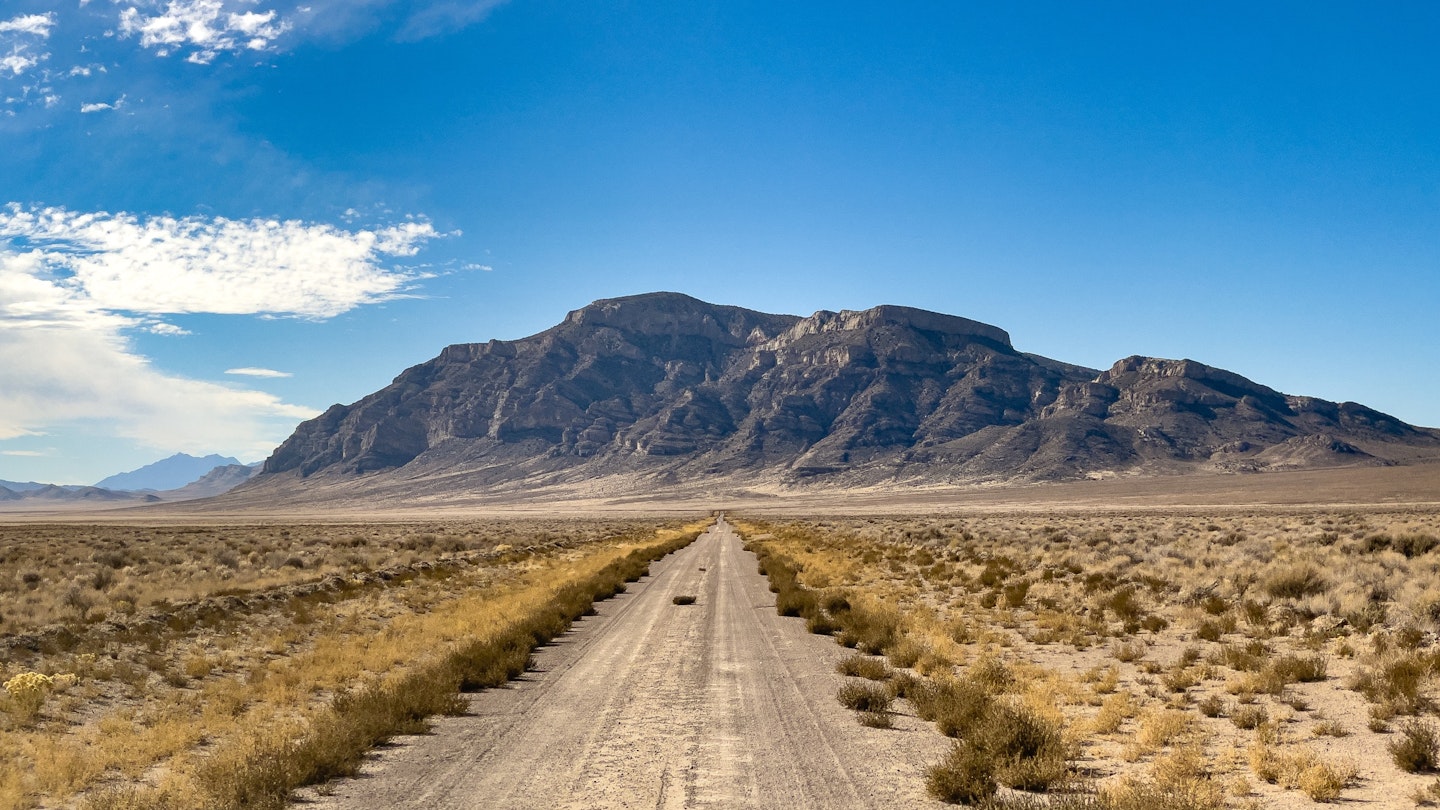Do you crave an outdoor adventure that takes you truly off the grid? A desert journey that reveals the subtle beauties of our planet in striking detail? Look no further than Nevada’s Basin and Range National Monument – a place where the air smells like earth and sage, the sky is blue and far-reaching, and the only itinerary you need is the one you make for yourself.
Here’s our guide to exploring one of the country’s most remote – and rewarding – national monuments.
What is Basin and Range National Monument?
Located on the traditional lands of the Newe / Western Shoshone Nation, Basin and Range encompasses 704,000 acres of protected Nevada desert that was designated as a national monument in 2015. This massive natural space is bigger than the country of Luxembourg, or the famous cities of Tokyo, Istanbul, Los Angeles, or Moscow, offering a bounty of adventure experiences in a truly isolated location – Basin and Range’s current yearly average for visitors hovers around just 40.
While it shares a similar name with the nearby Great Basin National Park, these two units present very different outdoor experiences. Managed by the Bureau of Land Management, Basin and Range has no official hiking trails (though cross-country hiking is permitted) and no established campsites – visitors can camp wherever they see fit, provided they do not build fires too close to the unique rock formations. Therefore, at the national monument, you truly design your own adventure.
Wildlife Big and Small
Basin and Range is a solitary place, but that doesn’t mean it’s devoid of life. The desert is home to animals of all sizes – come with a pair of binoculars, and you’re likely to spot at least one of its resident critters. Pronghorn antelope (actually related to the giraffe), bighorn sheep, coyotes, and bobcats are some of the larger creatures that roam the monument.
Additionally, smaller animals inhabit the sage- and blackbrush-speckled basins and washes: kangaroo rats, kit foxes, jackrabbits, and various snake species enliven the desert. Birds also frequent the monument, with raptors like the red-tailed hawk and golden eagle stealing the show.
Geology: Hello, Volcano!
The monument’s diverse geology is a testament to the area’s dynamic natural history. The entire region once rested beneath an ancient sea and, more recently (about 40 million years ago), it experienced significant volcanic activity. Today, visitors can see remnants of these explosive events in the form of ash-flow tuff, a light-colored rock that has weathered into the otherworldly stone figures dotting the landscape – the monument’s iconic Natural Arch and vertical rock towers are primarily composed of tuff.
Dive into Human History
Basin and Range also protects some significant human history. The monument includes several well-preserved petroglyph sites dating back around 4,000 years – head to the Newspaper Rock/White River Narrows Archeological District and the Mt. Irish Petroglyph Site to see the richest concentrations of drawings. These petroglyphs reflect multiple styles (including Fremont and Great Basin), suggesting that different groups traversed the basin and possibly interacted during this period. The inscriptions feature clear etchings of zoomorphs (animals like sheep and antelope) and anthropomorphs (human-like figures), along with various shapes and patterns.
Important note: Basin and Range anthropomorphs are sacred to local Indigenous communities, and they request visitors refrain from taking photographs of or disseminating images of these particular works.
Look Up: Basin and Range’s Dark Skies
This secluded wonderland is an ideal location for stargazing. The monument lacks any electric lights that might obscure the view, allowing thousands of stars, planets, and galaxies to be visible to the naked eye. To relish even more celestial wonders, find a good spot to set up a telescope and take in the spectacular night sky.
Michael Irving, the Outdoor Recreation Planner, says, “The night skies in the monument are among the darkest in the Lower 48 – they’re just spectacular. If you live in a large urban area or haven’t spent much time in rural parts of the country, dark skies will astound you. They’re becoming increasingly rare in the US, so to have a place like this – it’s something we really want to protect. We’re trying to preserve an experience that many people had growing up and that they hope to share with their children.”
Go Safely
While the enticing vastness of Basin and Range may inspire your next road trip, a visit here requires mindful planning and a fair amount of adventuring skills. Here are a few pointers to ensure a safe visit:
- Contact the Basin and Range BLM offices for advice and to learn about any potential hazards they’ve found in the monument.
- Expect no cell service in the area. Bring a paper map or download offline maps before you hit the road. A satellite phone could also be beneficial.
- Always inform friends and family about your itinerary, including when you’ll be going and when to expect your return. Rarely will you encounter another vehicle or visitor, so it’s essential someone knows your plans in case of an emergency.
- Use a suitable vehicle—high-clearance, 4×4-capable vehicles are a must. While some roads are well-groomed, others could damage a sedan. Ensure you have a fully inflated spare tire (or two) and know how to change a flat.
- Carry more water than you think you’ll need—two gallons per person is a good rule of thumb. Extra food is also advisable.





